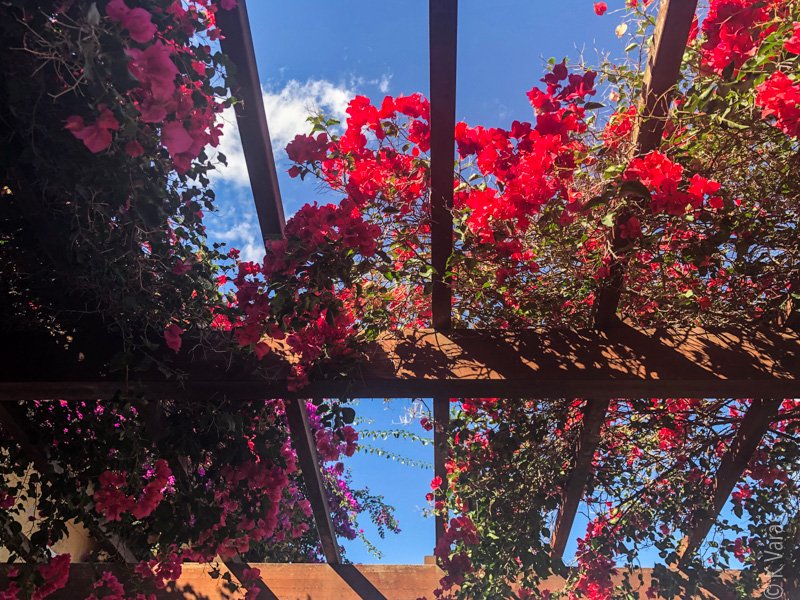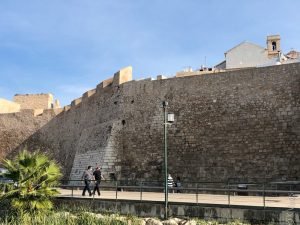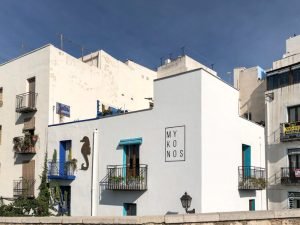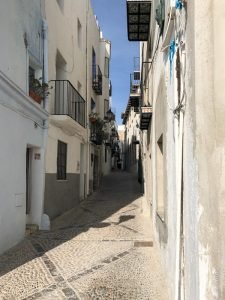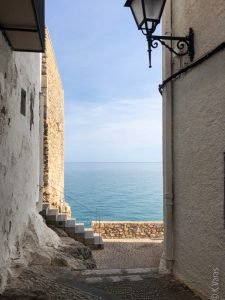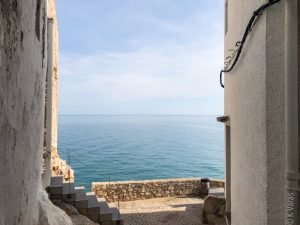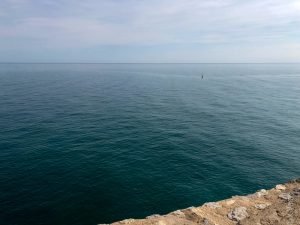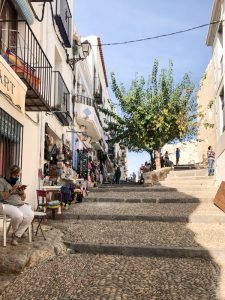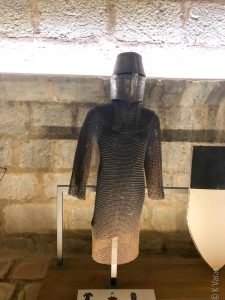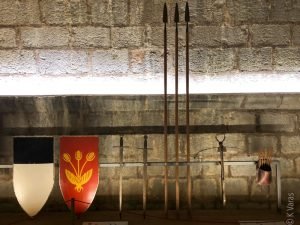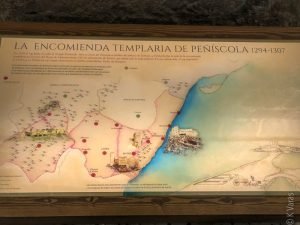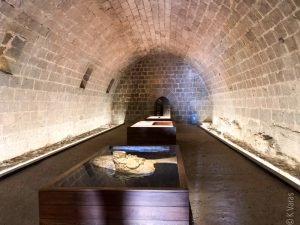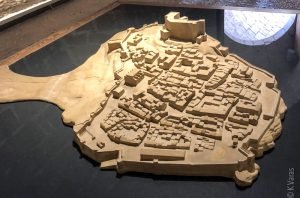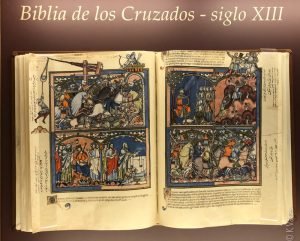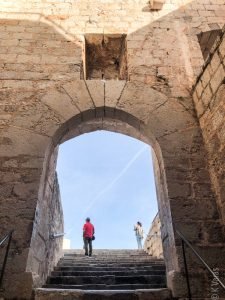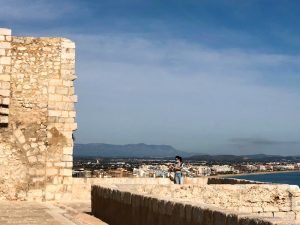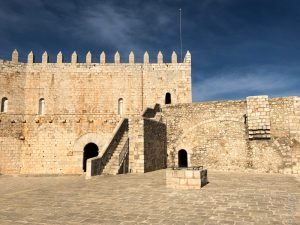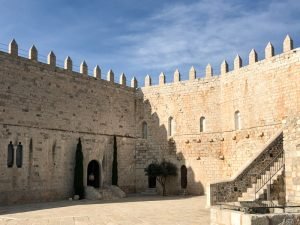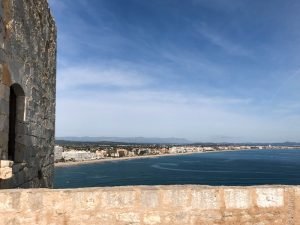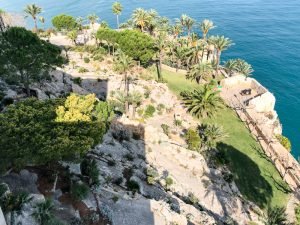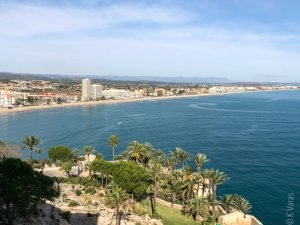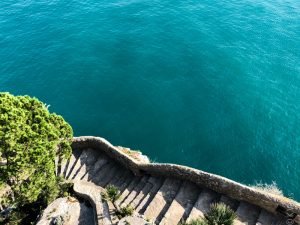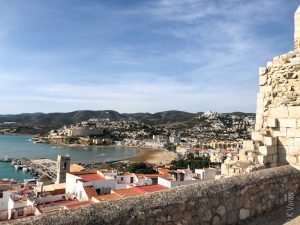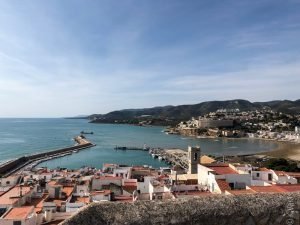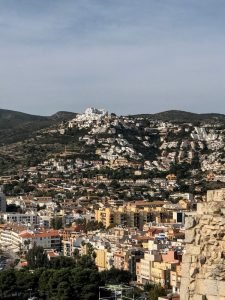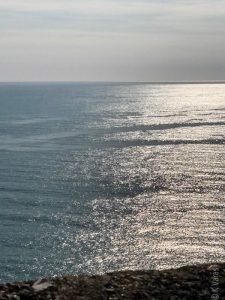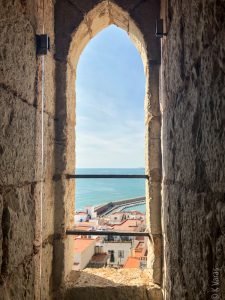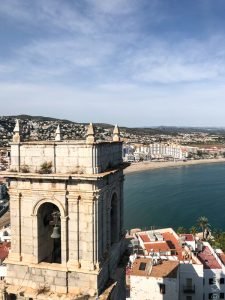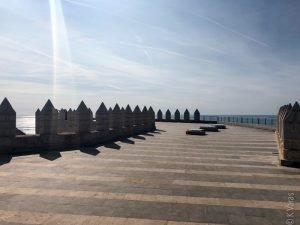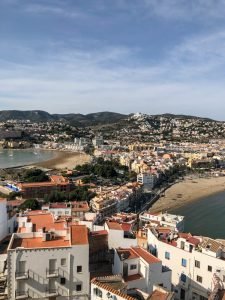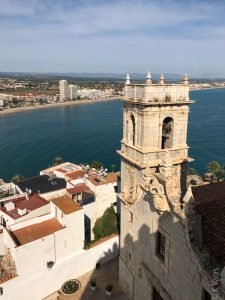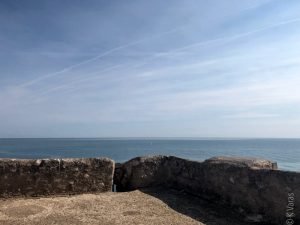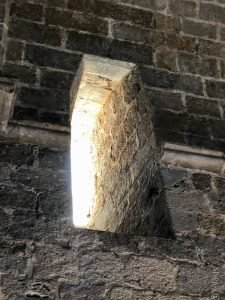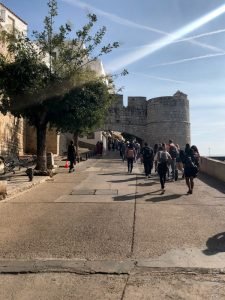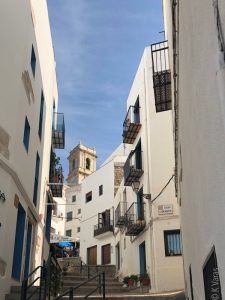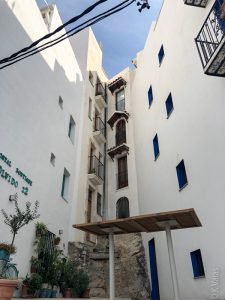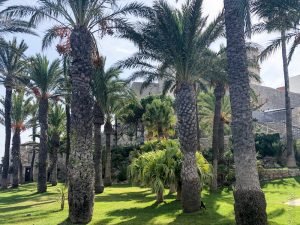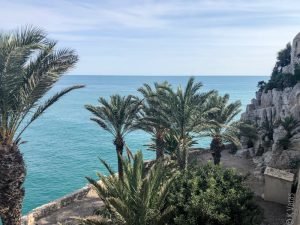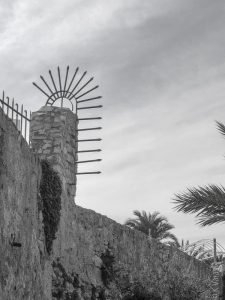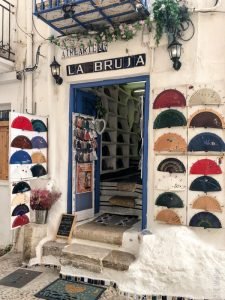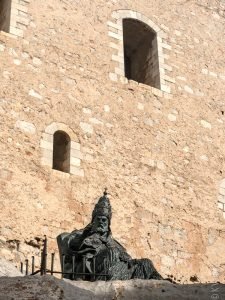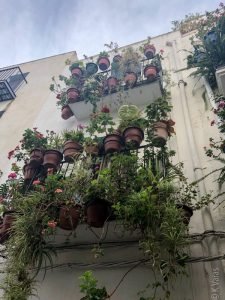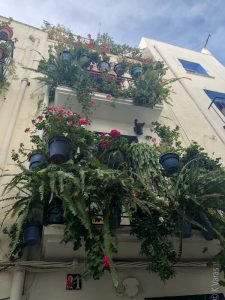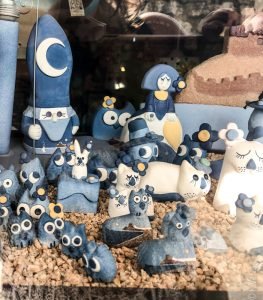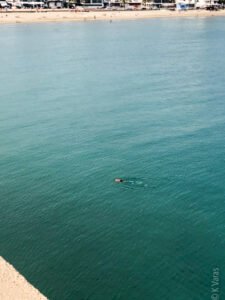
Peñíscola
I’m not sure if I should call it luck but it feels a bit like that so sure, let’s call it luck. I was lucky to have met a friend who happened to know about a local organization, the València Language Exchange, who just happened to be organizing some very inexpensive yet super educational and entertaining excursions to various neighbouring towns. All this to help people practice their language skills, whether Spanish or English, since the exchange goes both ways. Some of their trips are quite strenuous and involve hiking but many are city tours that even people like me (i.e. with bad knees) can manage to enjoy. And this is how I got to see the beautiful towns of Peñíscola and Morella.
The day started off early … we were to meet the tour group at 9am at a place just out of walking range so I found us a bus that would get us close enough. Unlike in Barcelona, I only get the scheduled time for buses, not their real-time arrivals, so planning a route can be a little tricky. Fortunately the bus stop for the one we needed this morning was just around the corner. Unfortunately, however, the driver decided to step on it earlier on his route making the bus arrive at least three minutes earlier … the three minutes we needed to get down the stairs and down the street. Usually, I tend to have a Plan B and this time that was taking the tram which goes by a few blocks away from where we needed to be. The reason, however, for the tram being Plan B and not A was the fact that this weekend there were some works being carried out in the city (or something along those lines though I don’t think it was going to be a celebration for Adrian’s birthday, sorry Poppet ;)) and there were going to be disruptions in the running of the trams and other bits of transit. October 25th was also the first night of the new, Covid-related curfew from midnight to 6am. Because of all this, taking the tram was now out of the question too, since it was not going to get us to our destination in time. Plan C, therefore, became the last option: grab a taxi. Except this was Sunday morning and there were no taxis in sight. We tried calling one but without being able to accurately determine our location (we were near a tram station in an open area where multiple streets and plazas converge), the taxi company refused to send one to us. Really wanting to be on time, we made our way to a busier street hoping to increase our chances of grabbing a cab there. In a few minutes one did show up, thankfully, and we were able to get to the meeting place with time to spare.
We did have to wait a bit longer because as hard as we tried to get there on time, I guess others weren’t as conscientious and stragglers were still showing up half an hour later. At last, however, we were allowed to board the tour bus (after a temperature check and the issuance of wipes), with masks in constant use, of course. As I studied my fellow travellers, I noticed that there was an interesting mix of young and old(er) as well as English and Spanish speakers. I’m sure I also heard a few other languages being spoken, though the tour organizer stuck to the two main languages while making announcements. Peñíscola is about 140km north of València, north even of Castellón de la Plana, the capital of the Castellón province, the northernmost province of Comunidad Valenciana. The bus ride there took almost 2 hours but nobody was complaining: I think everyone was happy to be out the city for a change.

We arrived just below the Peñíscola castle and Old Town around 11am and immediately got split into two groups: one to begin the guided tour, and another to explore on their own. Ewa and I decided to go the lazy route and start on our own. As we climbed through the narrow streets up to the castle, it became apparent that we were in for a treat. The main street leading up was along an old wall with beautiful view of the sea. The white stucco walls of houses rose higher than I expected, and the alleyways were more stairs than actual roads. I don’t know how the people who live there manage to bring any goods into the heart of the town–I kept imaging donkeys or mules carrying bags of rice, or sillier yet, flat packs from IKEA. It was definitely very picturesque.
Entrance to the castle cost a whole €2.50 and then the climb could start (again). Up and up we went, and with each step the views got more and more amazing. But first there was the interior of the castle to explore. What fascinated me a lot was the castle model which really nicely laid out the whole of the hilly peninsula that makes up old Peñíscola. The town has been around, in some shape or form, since at least the X century, though archeological findings put a settlement here as far back as the First century. The best part, however, is the fact that Peñíscola castle was built by the Templars! Yes! The Knights Templar, my favourite historical dudes, were a big deal in this area and I got to walk in their footsteps! I am still thrilled to bits.
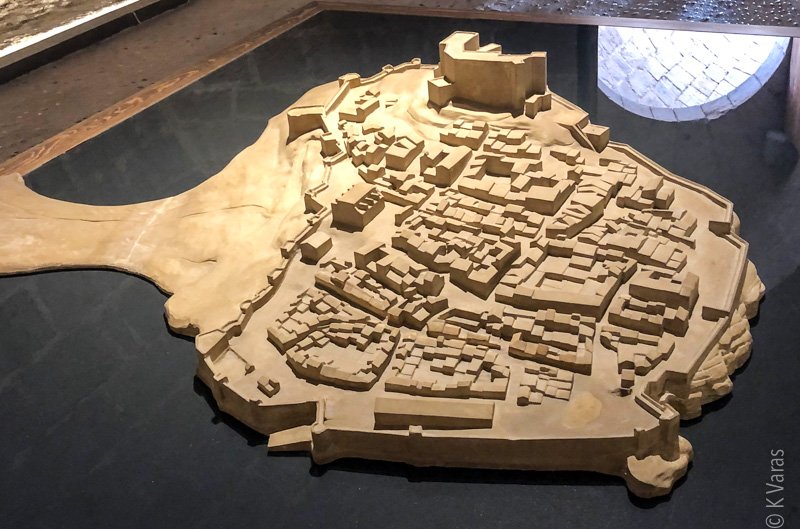
As the story goes, in 1294, Jaime II of Aragon gave the castle (with a couple others in the neighbourhood) to the Templars who were planning to establish a kingdom in the area. The Templars remodelled the place to suit them and in 1307 they had a very picturesque yet well fortified new home, a home they didn’t really get to enjoy for long. After the unfortunate end of the Templars in 1312 or so, and a hundred years later, Peñíscola became the home of the Antipope Benedict XIII, known here as Papa Luna, who seems to be a big deal, being a Spanish pope and all that. Now his likeness sits in front of the castle and overlooks the town below. As far as the castle goes, most of its core remains as it was for the Templars to this day. All I can say about that is clearly they didn’t believe in creature comforts but at least their views were to die for!
After climbing up as high as we could and enjoying the spectacular views from the roof of the castle, we made our way back into the old town to have a bite to eat before starting the official guided tour. It was a very weird way to have lunch, I have to say, as the table was perched precariously on the side of a steep narrow lane, and I felt like any minute, with one wrong move, I was going to tumble down the stepped street. But at least the food was pretty good. I am always amazed how restaurants here manage to utilize any and all spaces outside to have a way to serve food. It really is quite impressive.
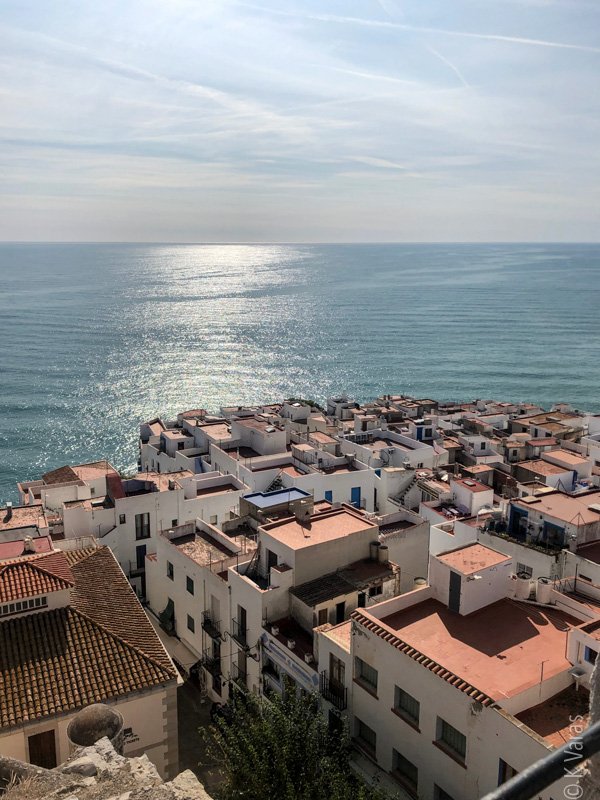
Once we finished eating, we made our way back to the tour meeting spot outside the walls of the old town where we met our guide, Julio, who told us the story of the castle and town in dizzying detail. He is the one who explained not only the name “Peñiscola” which comes from the Latin peninsula, but also that in the years when the castle was built, the connection of this peninsula to the mainland was much smaller, barely enough to get carts across, but over the years and many tonnes of sand and soil, enough land was built up that now there is a whole new neighbourhood. As we made our way back up the hill, Julio showed us el Bufador, a cave-like area down below some stone houses just beyond the main gate where sea water enters. Under the right conditions, the sound of the air moving through the bufador, or blowhole, can be heard through much of the Old Town; a great snort that reverberates through the air. When the waters start to churn, the sound is accompanied by spray that rises up like a jet of steam. We were told that when the sea is particularly riled up, a great column of water bursts from the 210-foot-long blowhole at intervals, sometimes so forcefully it makes the nearby buildings quake. Unfortunately, the sea was rather calm on this day and only mild snorts were heard. I tried getting a photo but none really captured just how cool this bufador is; you’ll just have to take my word for it.
After approaching the castle from the opposite side we had gone earlier, we entered the armoury garden at the north face of the castle: this garden is full of various plants and trees, but also massive cannons facing in all directions and underground passages to what I can only assume were ordnance storage vaults. Judging by the maze-like layout of them, however, I wonder how the defenders of the castle could possibly keep their cannons well-stocked when the tunnels to the storage areas were so convoluted. But maybe I’m just interpreting the design wrong and it all made sense at the time; I’d love to see a schematic just to understand it better. I should have probably paid better attention while inside the castle and studying the maquette. What was rather interesting was spotting a snorkeler clearly looking for something in the sea just off the castle’s walls: he was there all by himself, with no supporting vessel in sight. I’m not sure if that was very brave or very stupid, or maybe just another day on the coast.
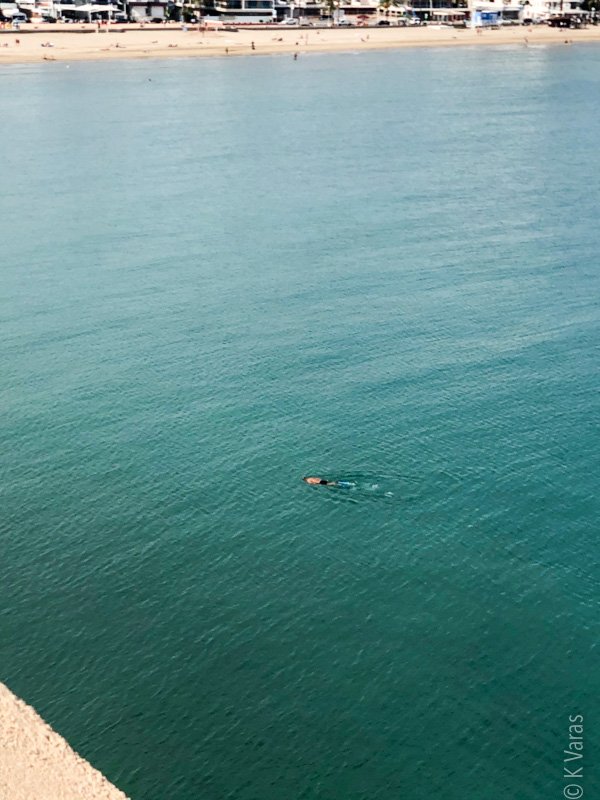
All in all, Peñíscola is a beautiful town, with lots of charming shops and restaurants, and amazing views, whether from the Old Town or the more modern surrounding areas most of which climb the hills along the coast. Do check out the Gallery for more photos. My good friend Monica likes anything bruja-related so here is a shop for you, Moni, I hope you like it:

It was now time to get back on the bus and the 80km ride to the next town on the itinerary: Morella.

